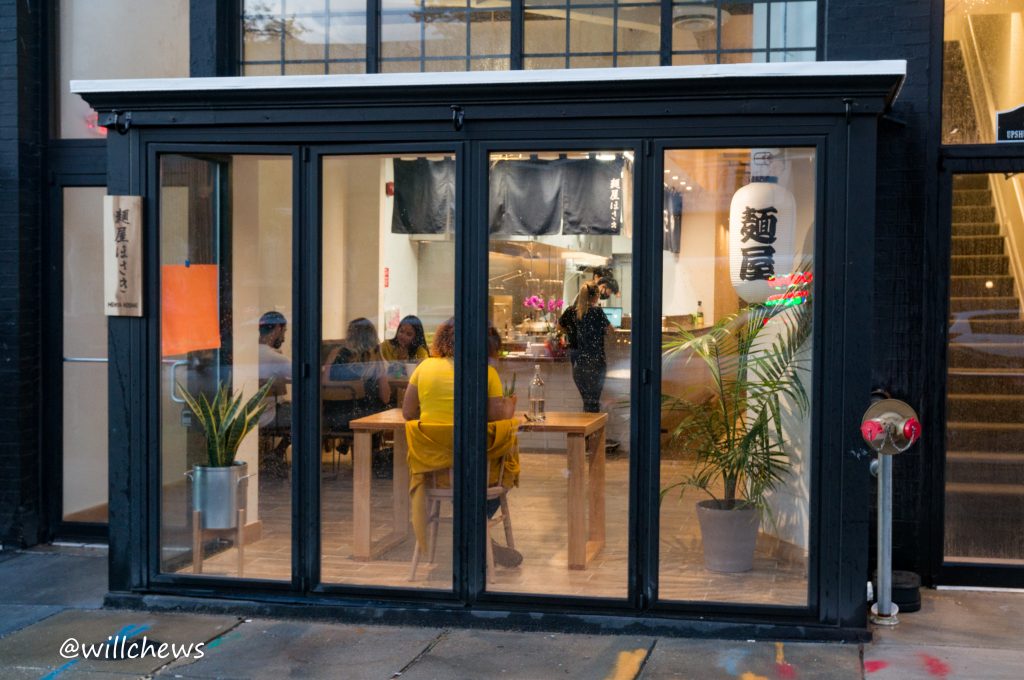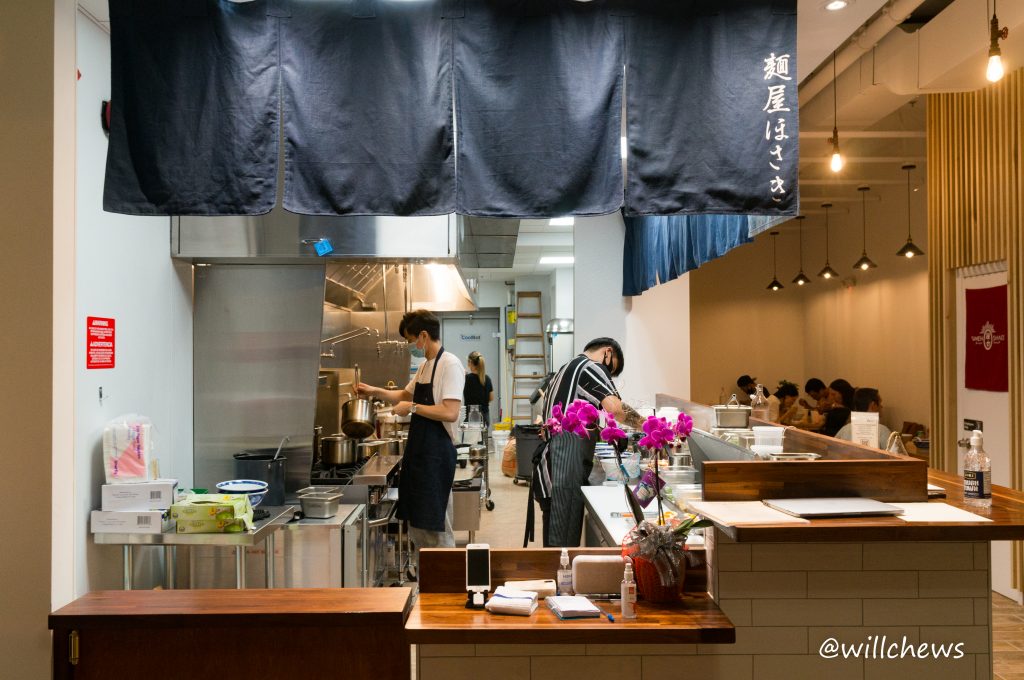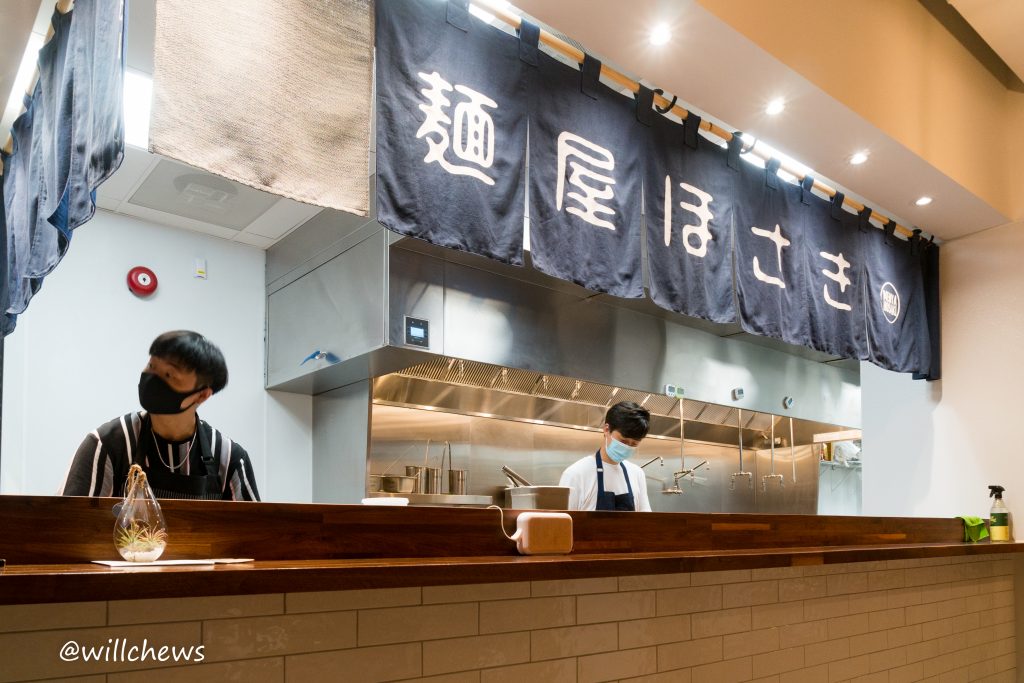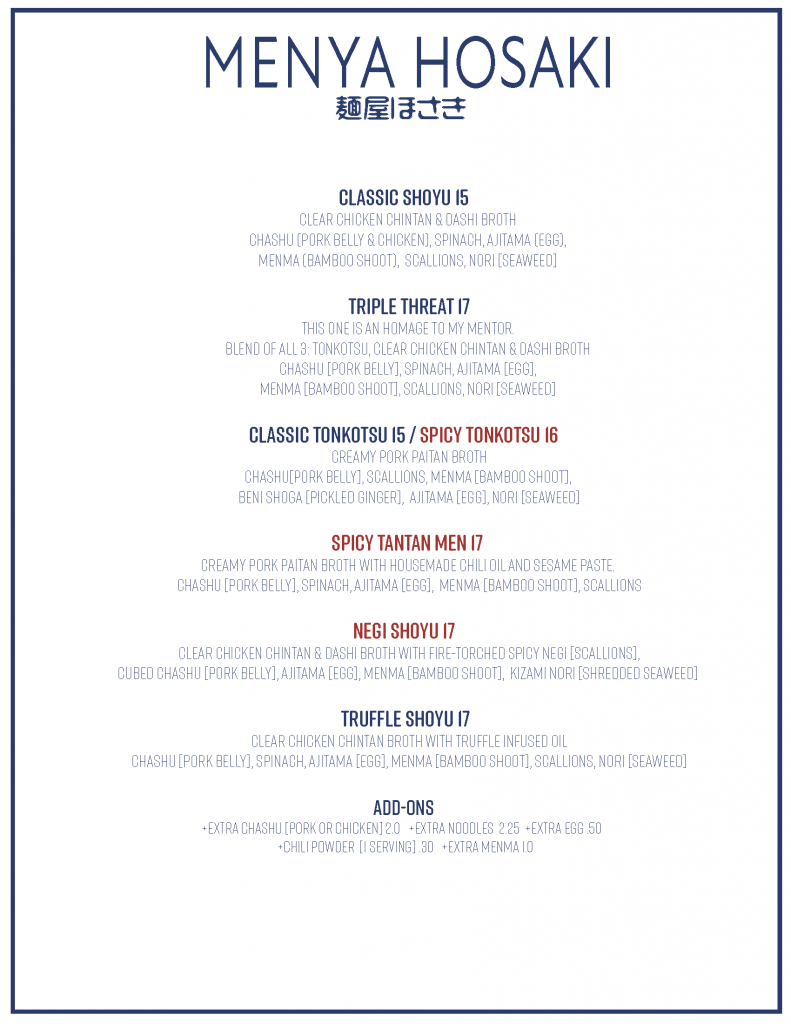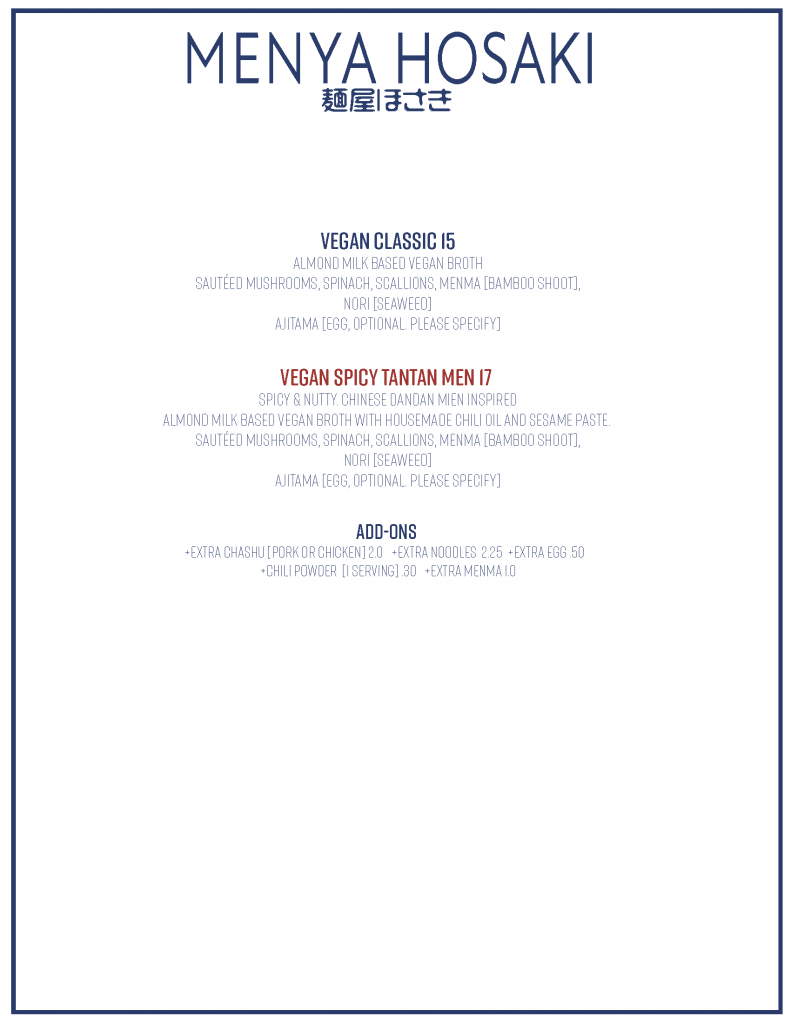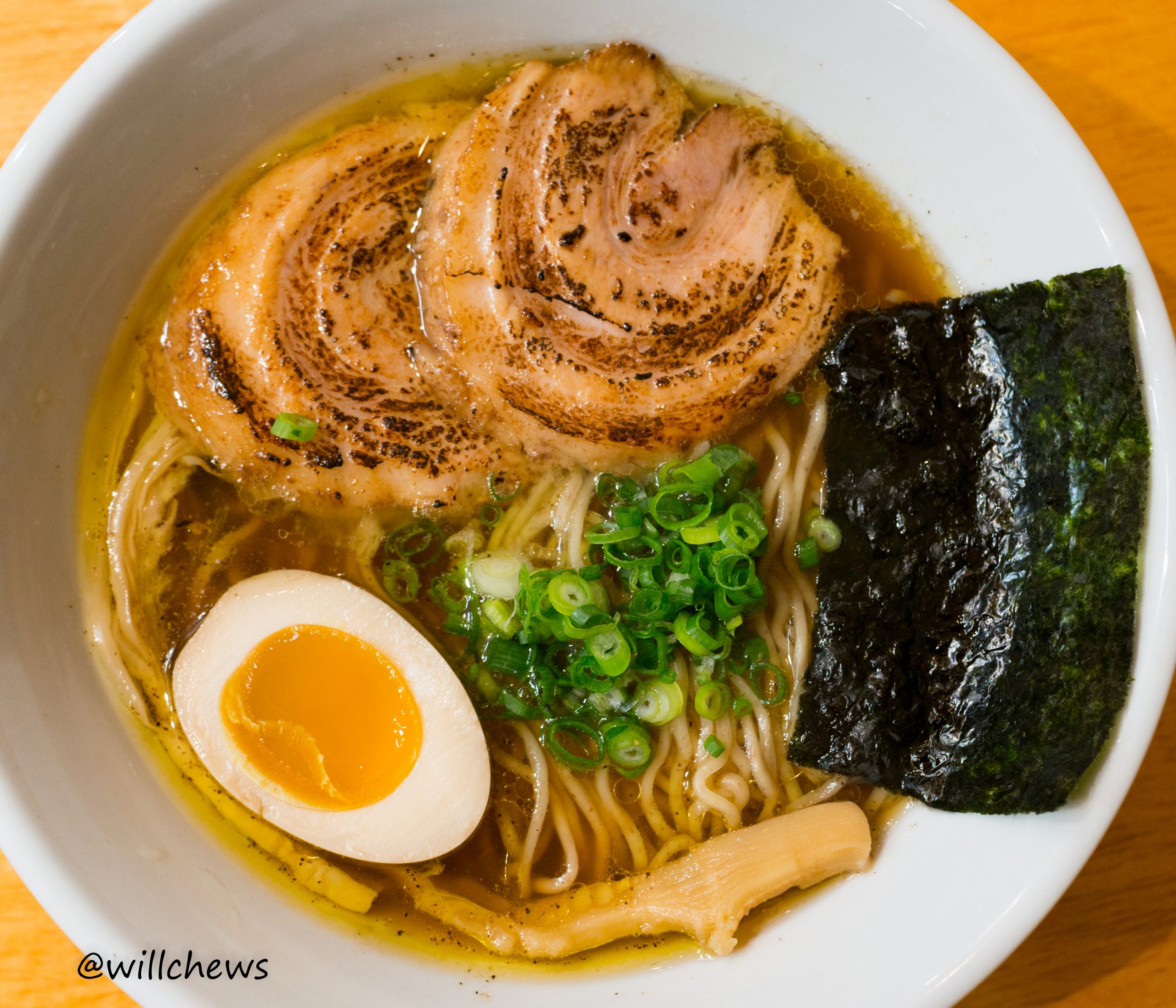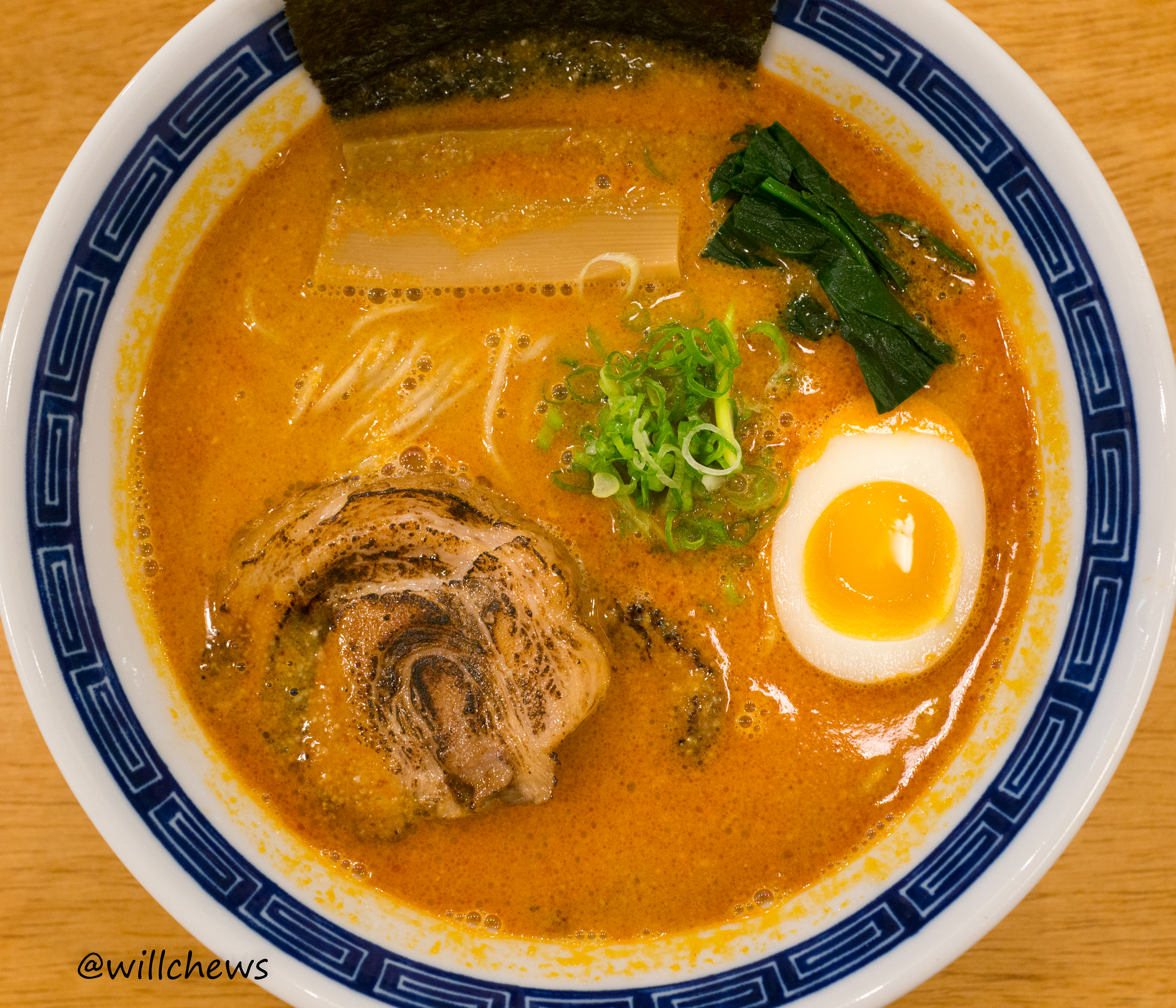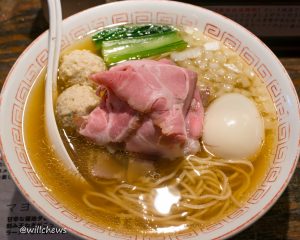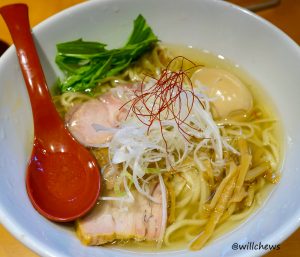Hosaki has retained the menu from its pop-up, so no surprises for long-time diners. I’ve reviewed various bowls already (Ramen Nos.
153,
154,
155,
157, 158, 161, 172), so I selected the Truffle
Shoyu Ramen, which I haven’t tried yet. In my experience, truffles (and mushrooms in general) in ramen have usually been disappointments because the ingredient tends to overpower everything else in the bowl. That was the case with the Truffle Chintan Ramen from Okiboru in Atlanta (No. 164), where the overwhelming smell and taste of truffle oil was only surpassed by the saltiness of the broth. There have also been a number of unfortunate instances where some American ramen shops have tried to establish their “Asian” bonafides by dropping shiitake mushrooms in the broth, which made the mediocre bowls worse. Even Michelin-starred ramenya are vulnerable to this mushroom danger: Konjiki Hototogisu (No. 94) featured a porcini mousse in its
shio ramen that, when mixed into the otherwise delicate and excellent broth (made with a giant clam no less), completely blotted everything else out. The only case where truffles and mushrooms in ramen did not disappoint was the shoyu ramen topped with black truffle shavings from Michelin-starred Tsuta (No. 26). Truffles and mushrooms in ramen have a terrible hit-rate, and along with the critiques of truffle oil as
a deceptive gimmick, I tend to treat them with a lot of suspicion.
I’m glad to say that Hosaki’s version has improved the hit ratio. The truffle oil injects its eponymous flavor into the bowl, but it’s by no means overpowering. Perhaps the trick is that the shoyu broth in the Truffle Shoyu only features chicken stock, while his normal
Tokyo-style (chicken-)shoyu ramen (
No. 153) features both chicken and dashi stock. I’ll be honest, I don’t love this bowl because conceptually I still don’t think truffles or mushrooms complement or enhance the flavors of other ramen ingredients very well and would rather just stick with the base shoyu ramen. But this more simplified approach of using a single chicken stock means that the truffle oil has fewer partners to create sensual cacophony, which has always been one of my main complaints against truffles and mushrooms in ramen. So while my flavor preferences will make me gravitate to the other ramen on Hosaki’s menu, Yoo has done a great job in walking that fine line with truffle oil.
The other notable wrinkle to the new Hosaki is the introduction of their noodles made in-house. Yoo used to source his noodles from his mentor, Shimamoto Keizo of Ramen Shack (No. 131) and
Ramen Burger fame. But COVID and its impacts on production and shipping has meant that Hosaki had to look for other sources. After briefly using noodles sourced from ramen supplier giant Sun Noodles, Yoo began experimenting with making his own noodles in-house, with different styles and thicknesses of noodle for different types of ramen like a proper ramen shop would. I’ve had the opportunity to taste some of the prototypes and think they’re terrific. The in-house noodles had their debut yesterday and were excellent, freshly-made with bits of milled wheat appearing them, and having noticeable but not overbearing
kansui bounce. This is a far cry from the overly-alkali noodle profiles that most American shops request from suppliers such as Sun and Nishiyama. For this reason alone, it’s worth checking out Hosaki to get a taste of proper, freshly-made ramen noodles–they’ll be a surprise to first-timers.
The remaining toppings remain unchanged from Hosaki’s standard repertoire and are uniformly very good-to-excellent:
ajitama egg,
menma bamboo shoots, and the Iwanami torched, roasted pork belly
chashu. I’ve said before that I would buy his pork chashu to order, and nothing has changed in my thinking, though I think they could’ve been torched just a bit more this time. The new menus, included below, now include prices for extra toppings. For a menma fiend such as myself, $1 for an extra helping of bamboo shoots is a must for next time.
As I’ve long lamented,
Daikaya and its sister ramen restaurants have long reigned in the District, both in terms of presence as well as in word-of-mouth recommendations I’ve gotten from locals. I’ve argued that this has been to the detriment of diners’ wallets and ramen knowledge due to the group’s up-charging tactics and indifferent ingredients and flavors. In contrast, Hosaki’s approach captures the methods and flavors of the best shops in Japan. From its new perch in DC, it can start changing a few minds.
Grand opening should be September 9th.
